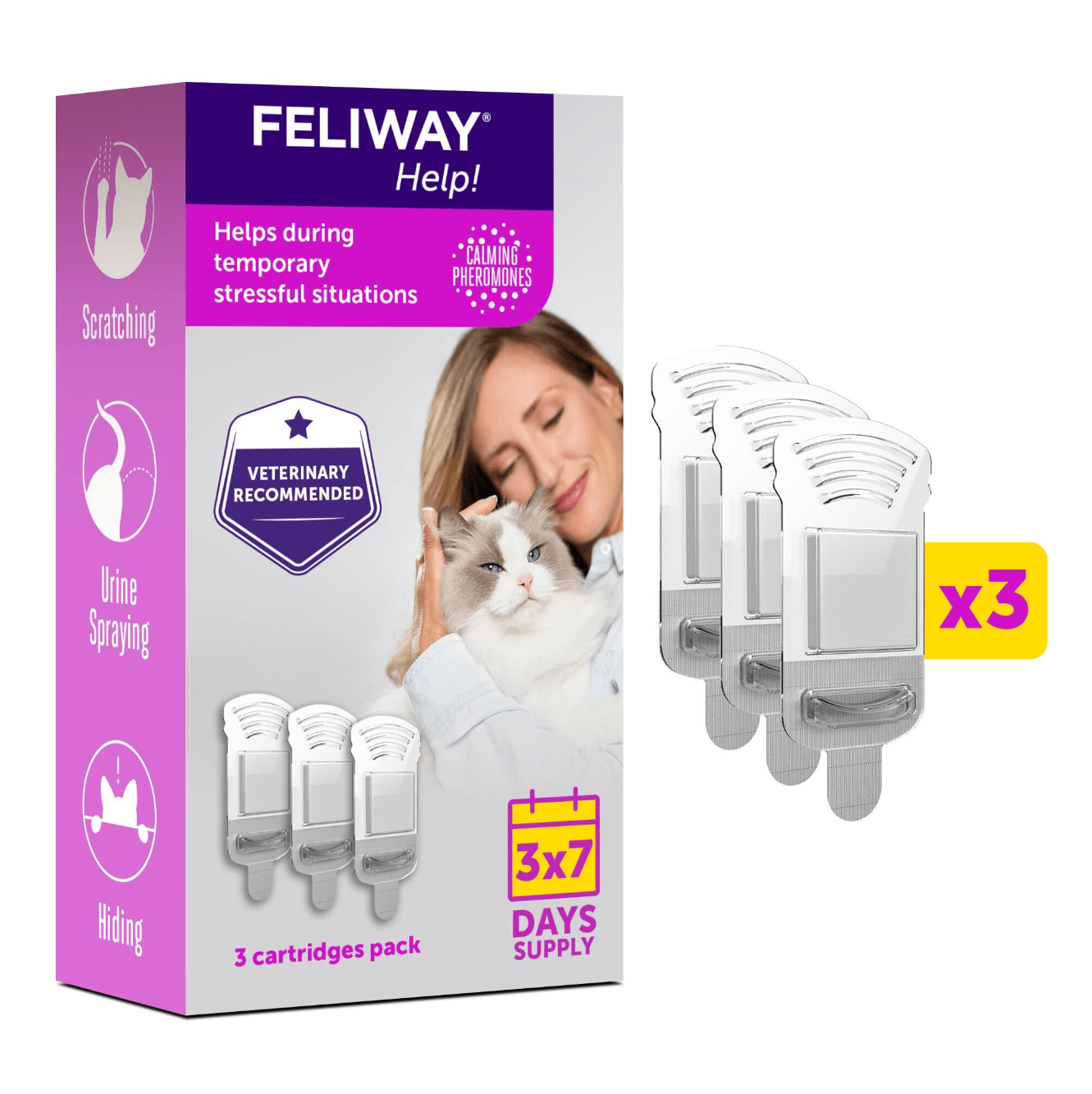Feline urine spraying at home is a common behaviour problem that owners seek advice for from veterinarians. Current strategies advocate cleaning urine marks and behavioural modifications to remove specific triggers alongside psychopharmacological and non pharmacologica interventions such as use of FELIWAY® CLASSIC in the environment. Several trials relating to different treatments are available in the literature, but without any consensus to date on the value of each treatment compared to the others. It appears that none is successful in completely resolving the behaviour in all urine spraying cats. This current study aimed to meta-analyse data from published trials that evaluated treatments for feline urine spraying. The search, done in 2009 on three electronic databases, included the following terms: Urine spraying, Urine marking, Cat, Feline, Behaviour/Behavior. Included studies had to be published as a peer reviewed publication, to provide sufficient information to extract representative data, and only to be about reactional vertical spraying. Among 24 identified studies, only 10 (from 9 publications) were suitable for analysis: 4 evaluated the use of FELIWAY® CLASSIC (synthetic analogue of the F3 feline facial fraction), and 6 pharmacotherapy papers (clomipramine or fluoxetine). Since all studies were not placebo-controlled, a placebo effect was calculated from two randomised controlled studies, then used in subsequent comparisons. Studied cats were mostly indoor, and living as single or multi-cats. A first analysis compared FELIWAY® CLASSIC (pheromonatherapy) and pharmacotherapy in terms of the number of cats that ceased or reduced urine spraying by at least 90% (meaning a decrease in urine spraying between 90 and 100%). A second analysis focused on FELIWAY® CLASSIC papers, with the number of cats that reduced urine spraying from baseline levels (whatever the decrease, compared to initial spraying).
Results
The authors found a significant (p=0.001) association between the use of any intervention (FELIWAY® CLASSIC or psychoactive drugs) and the number of cats that stopped or reduced urine spraying by at least 90%. Analysis by intervention type indicated that fluoxetine, clomipramine and FELIWAY® CLASSIC may each assist in managing urine spraying beyond a placebo.
This Meta-Analysis showed that drug treatments and FELIWAY® CLASSIC were more effective than a placebo. Although, pheromones had a more limited effect on the threshold criteria compared to drug treatments, the number of cats that ceased or at least reduced urine praying greater than 90%. However, the comparison was done whatever the treatment duration (due to initial individual study designs), although fluoxetine and clomipramine trials lasted much longer than FELIWAY® CLASSIC trials (respectively up to 16 weeks compared to only 4 weeks).
In addition, some environmental modifications were implemented alongside drug treatment, whereas no change was added to FELIWAY® CLASSIC use. Thus, FELIWAY® CLASSIC effect reported here may be underestimated.
When looking at any reduction in urine spraying behaviour, a significant effect (p=0.05) was evidenced after 4 weeks of FELIWAY® CLASSIC use, compared to initial urine spraying rate.
Conclusion
This provides the strongest evidence to date that both psychoactive drugs and FELIWAY® CLASSIC are of added value in the management of feline urine spraying. This paper also highlights the need of further blinded controlled studies lasting for at least 8 weeks assessing the cessation or decrease of urine spraying at least 90%. Those would allow more direct comparison between the efficacy of FELIWAY® CLASSIC and drugs, as well as compliance (daily oral dossing for drugs versus plugging-in FELIWAY® CLASSIC Diffuser monthly).









































